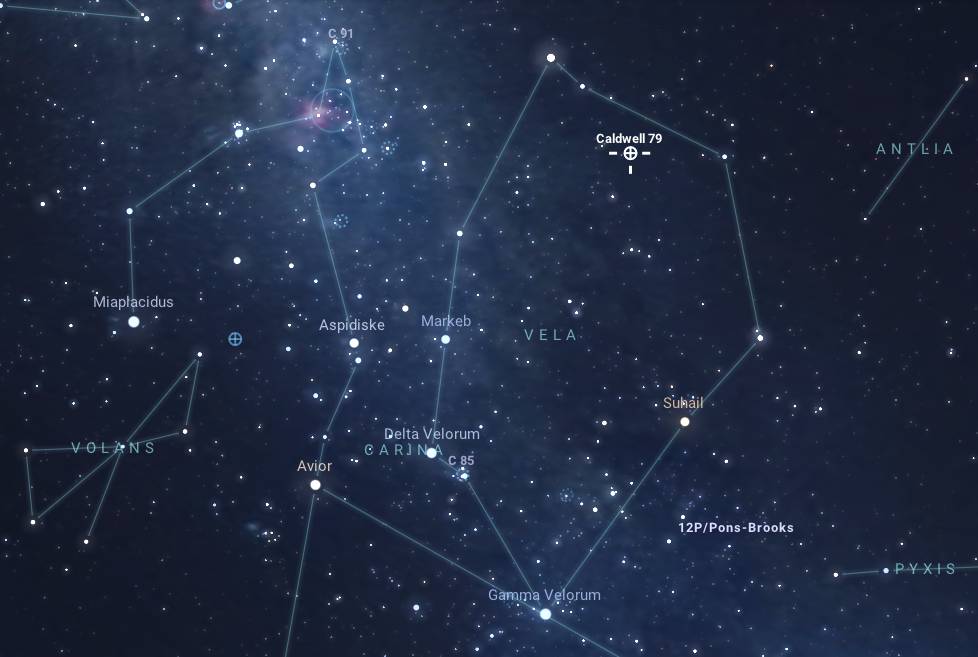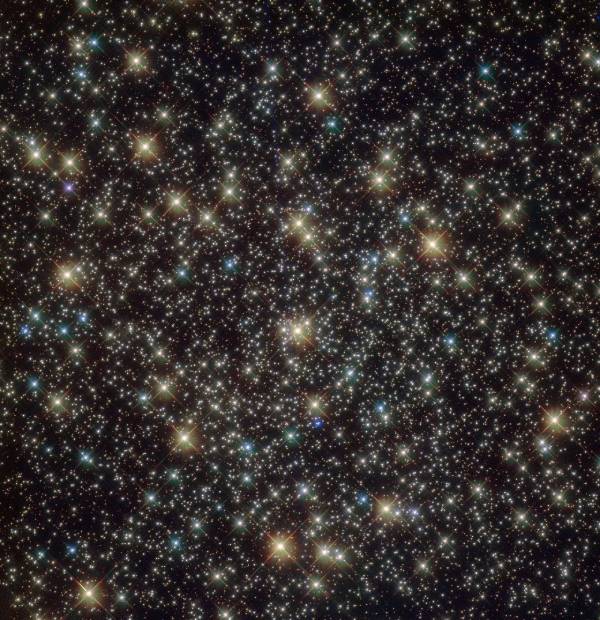The Omicron Velorum Cluster, also known as NGC 3201 or Caldwell 79, is an open star cluster located in the constellation of Vela. This cluster lies in the southern celestial hemisphere and is well known for its distinctive appearance and relatively close proximity to Earth.
Historically, the Omicron Velorum Cluster has been observed since ancient times, with various cultures recognizing its presence in the night sky. It was catalogued as NGC 3201 by the French astronomer Nicolas Louis de Lacaille during his expedition to the Cape of Good Hope in the 18th century. Lacaille’s identification of the cluster marked the beginning of its recognition as an open star cluster, a classification that was later confirmed by subsequent astronomers.
Physical Characteristics
The Omicron Velorum Cluster is a relatively young open star cluster, containing several dozen to a few hundred stars. These stars are densely packed within a region spanning approximately 10 to 20 light-years in diameter. The cluster is predominantly composed of young, blue-white stars, with some cooler, red stars also present, contributing to its overall colour diversity.
The estimated age of the stars in NGC 3201 is around a few hundred million years, which is relatively young compared to many other globular clusters in the Milky Way. This youthful characteristic, combined with the cluster’s proximity to Earth, makes it an excellent target for studying stellar evolution and the formation processes of young star clusters. The dynamics of the stars within the cluster provide valuable insights into the early stages of star formation and the life cycles of stars.
Apparent Magnitude and Size
NGC 3201 has an apparent magnitude of approximately 3.8, allowing it to be visible to the naked eye under dark sky conditions. In the night sky, it appears as a faint, fuzzy patch of light. When viewed through binoculars or a small telescope, the cluster reveals itself as a dense grouping of stars, appearing more defined with a diameter spanning a few arcminutes (9.6 arcminutes). This relatively compact size makes it a fascinating object for amateur astronomers to observe.
Observation
NGC 3201 is best observed from southern latitudes or locations near the equator. It is particularly well placed for viewing during the Southern Hemisphere’s summer months (December to February), when the constellation Vela reaches its highest point in the sky. In dark sky locations, the cluster is visible to the naked eye, but using binoculars or a small telescope significantly enhances the viewing experience, allowing observers to appreciate the rich grouping of stars.

Observers in the Northern Hemisphere, especially those at mid-northern latitudes and higher, generally find it challenging to view the Omicron Velorum Cluster, as it remains too far south in the sky to rise above the horizon. However, in very southern locations within the Northern Hemisphere—such as parts of Mexico, the southernmost regions of the United States, or areas near the equator—there may be opportunities to glimpse the cluster low on the southern horizon during specific times of the year, provided the atmospheric conditions are favourable.
Overall, the Omicron Velorum Cluster is a beautiful and intriguing target for amateur astronomers, offering a glimpse into the processes of star formation and the diverse stellar populations within our galaxy. Its relative proximity and youthful characteristics make it a valuable object of study for understanding the dynamics of open clusters.



